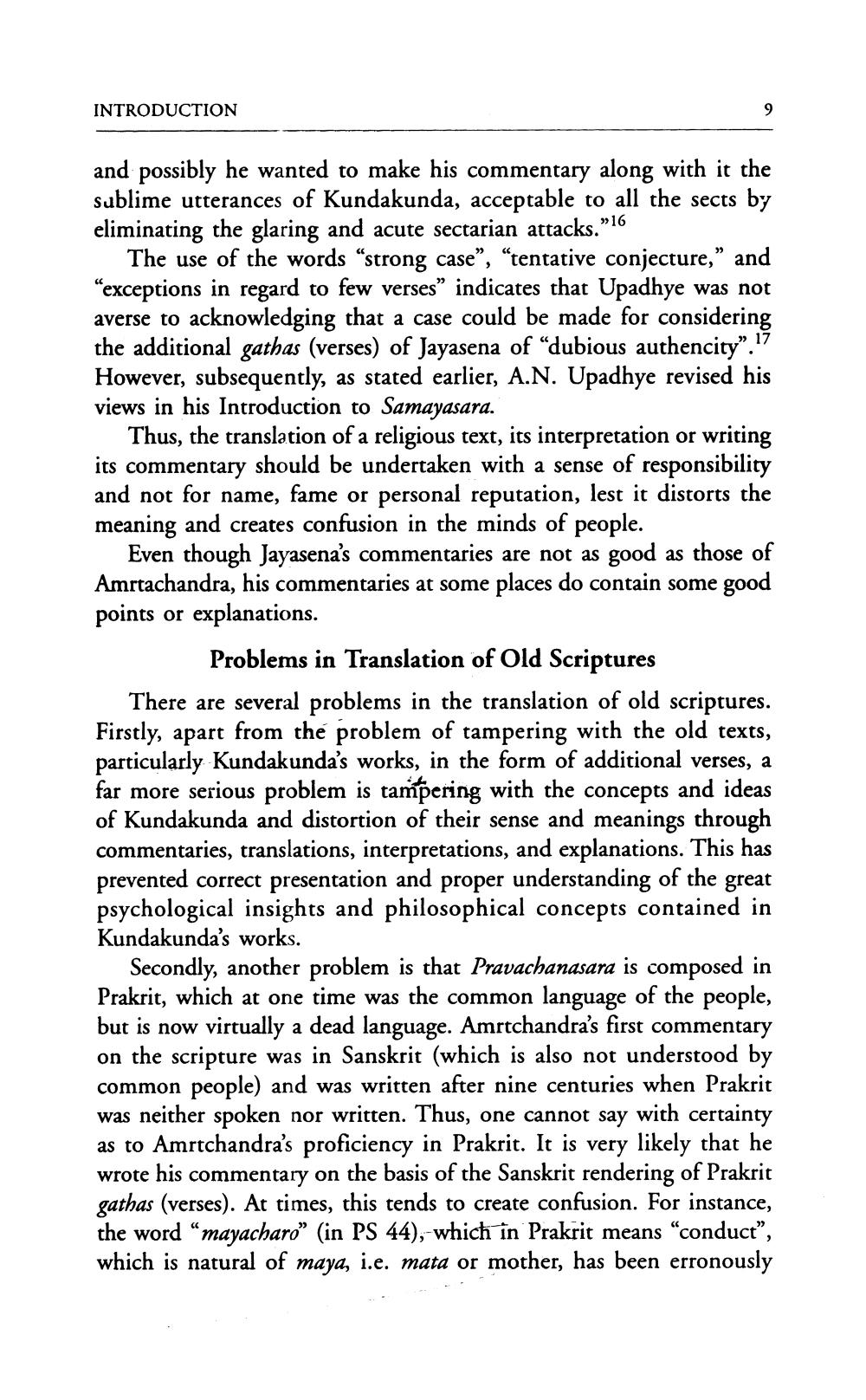________________
INTRODUCTION
and possibly he wanted to make his commentary along with it the sublime utterances of Kundakunda, acceptable to all the sects by eliminating the glaring and acute sectarian attacks."16
The use of the words “strong case”, “tentative conjecture," and "exceptions in regard to few verses” indicates that Upadhye was not averse to acknowledging that a case could be made for considering the additional gathas (verses) of Jayasena of “dubious authencity”.!? However, subsequently, as stated earlier, A.N. Upadhye revised his views in his Introduction to Samayasara.
Thus, the translation of a religious text, its interpretation or writing its commentary should be undertaken with a sense of responsibility and not for name, fame or personal reputation, lest it distorts the meaning and creates confusion in the minds of people.
Even though Jayasena's commentaries are not as good as those of Amrtachandra, his commentaries at some places do contain some good points or explanations.
Problems in Translation of Old Scriptures There are several problems in the translation of old scriptures. Firstly, apart from the problem of tampering with the old texts, particularly Kundakunda's works, in the form of additional verses, a far more serious problem is tampering with the concepts and ideas of Kundakunda and distortion of their sense and meanings through commentaries, translations, interpretations, and explanations. This has prevented correct presentation and proper understanding of the great psychological insights and philosophical concepts contained in Kundakunda's works.
Secondly, another problem is that Pravachanasara is composed in Prakrit, which at one time was the common language of the people, but is now virtually a dead language. Amrtchandra's first commentary on the scripture was in Sanskrit (which is also not understood by common people) and was written after nine centuries when Prakrit was neither spoken nor written. Thus, one cannot say with certainty as to Amrtchandra's proficiency in Prakrit. It is very likely that he wrote his commentary on the basis of the Sanskrit rendering of Prakrit gathas (verses). At times, this tends to create confusion. For instance, the word "mayacharo" (in PS 44), which in Prakrit means "conduce”, which is natural of maya, i.e. mata or mother, has been erronously




